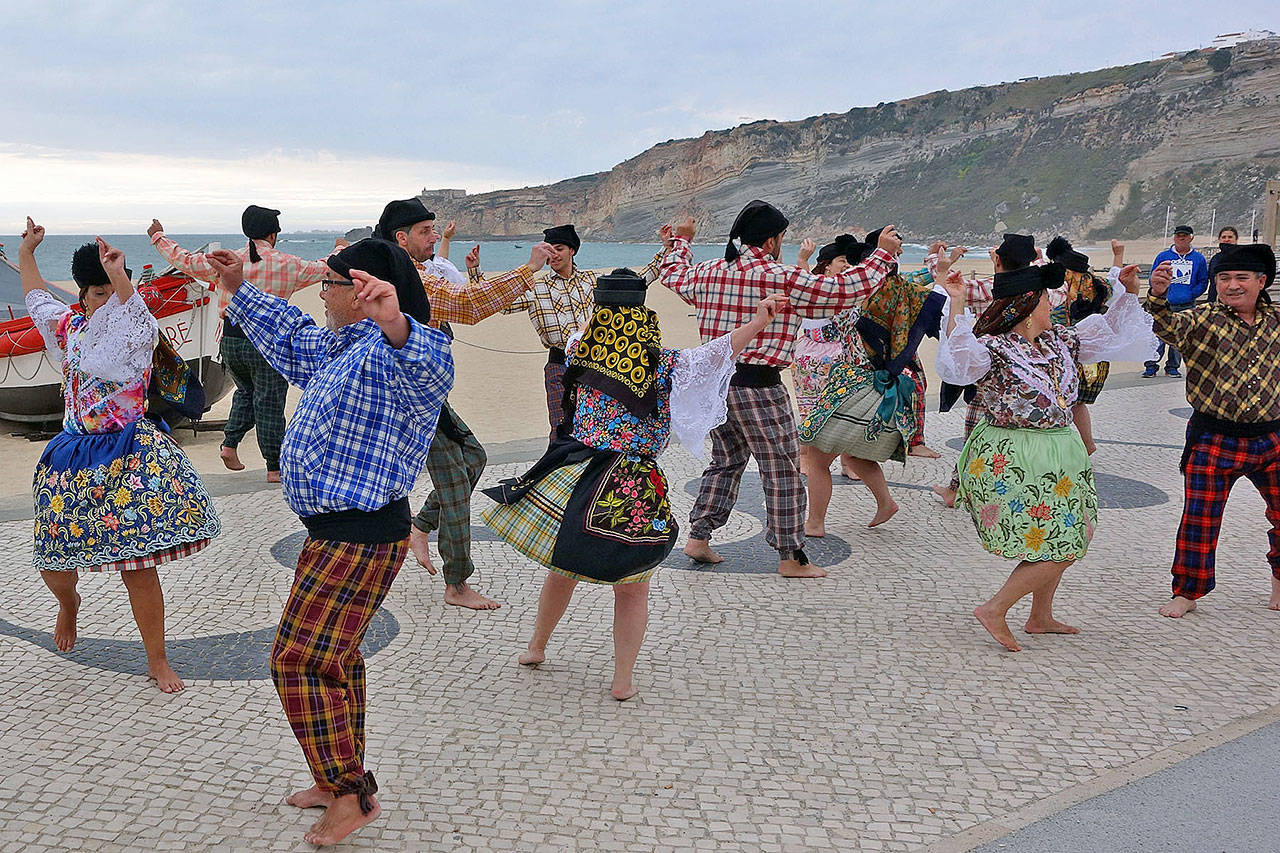Tucked into a far corner of Europe, just two hours north of Lisbon, is one of my favorite beach towns: Nazare, a Portuguese fishing town turned tourist retreat. Visitors are greeted by the energetic applause of the surf, widows with rooms to rent and fishermen mending nets. This is a place to relax in the sun among cork groves, eucalyptus trees, ladies in petticoats and men who stow cigarettes and fishhooks in their stocking caps.
Nazare strikes the ideal balance between romantic old-world Portugal and bustling seaside resort. Though most locals seem older than many buildings here, the town feels like a Portuguese Coney Island — humming with young people who flock here for beach fun. Off-season, it’s almost tourist-free — the perfect time to take in the wild surf and get a feel for the local way of life.
The town’s layout is simple: Super-skinny streets with sun-bleached apartment blocks stretch away from an expansive beach. The beach sweeps between the new harbor in the south and the cliffs to the north, capped by the old-town neighborhood of Sitio.
It seems that most of Nazare’s 15,000 inhabitants are in the tourist trade, but it’s not hard to find pockets of vivid and authentic culture. Somehow traditions survive. I like to stroll through the market and wander the back streets for a fine look at Portuguese family life. Laundry flaps in the wind, kids play soccer and fish sizzle over tiny curbside hibachis.
Nazare is famous for its traditionally clad women who — at least according to local lore — wear skirts with seven petticoats (one for each day, or for the seven colors of the rainbow, or … make up your own legend). While the story is somewhat of an invention for the sake of tourism, there is an element of truth to it. In the old days, women would wait on the beach for fishermen to sail home. To keep warm in the face of a cold sea wind, they would wear several petticoats so they could fold layers over their heads, backs and legs. Even today, older and more traditional women wear skirts made bulky by several — but not seven — petticoats. The ensemble is completed with house slippers, an apron (hand-embroidered by the wearer), a woolen cape, head scarf and flamboyant jewelry, including chunky gold earrings (often passed down from generation to generation).
Nazare doesn’t have any blockbuster sights, but its people-watching could keep you busy for days. The beach, tasty seafood and a funicular ride are the bright lights of my lazy Nazare memories. The funicular — which leads from the beach up to the Sitio neighborhood — was built in 1889, the same year as the Eiffel Tower (and was designed by a disciple of Eiffel).
With its own church, museum and main square, Sitio feels like a separate village on a scenic bluff. Up here, a stone memorial honors the nobleman and explorer Vasco da Gama, who stopped here before leaving Europe for India. A tiny adjacent chapel sits on the spot where a statue of the Black Madonna hid in the rocks throughout the 400 years of this region’s Muslim Moorish rule, before it was rediscovered during the 12th-century Christian Reconquista.
Down along the beach, local folk music groups play and dance for visitors. On my latest trip, I was treated to a show by the town’s oldest group, which has been kicking up Nazare’s sand since 1934. If they’re not on the beach, you’ll find them dancing on a sidewalk inlaid with fine Portuguese stonework.
When these dancers were younger, the vast beach at Nazare was littered with colorful fishing boats that were hauled in by oxen or teams of fishermen. But ever since a new harbor was built south of town (a 30-minute walk away), the working boats are kept out of sight — only a few historic examples still ornament the sand. On the boardwalk, squadrons of sun-dried and salted fish are crucified on nets left under the midday sun. Locals claim they’re delicious, but I’d rather eat barnacles!
Barnacles (“percebes”), my sentimental favorite here, are sold on the street like munchies. Merchants are happy to demonstrate how to eat them — like boiled clams, washed down with local beer. Fresh barnacles are expensive, as they are difficult and dangerous to harvest from the rocks they cling to in turbulent waves along the coast. But rip off the tough outer skin of one of these guys and pop it in your mouth, knowing it was harvested just hours ago … and it’s worth the expense.
With its black-shawl tradition and beachy hospitality, Nazare is a great spot for a vacation from your vacation. Kick back and share a bottle of chilled “vinho verde” on the beach at sundown, and enjoy the endearing charms of tranquil Portugal.
— Tribune Content Agency
Talk to us
> Give us your news tips.
> Send us a letter to the editor.
> More Herald contact information.

























